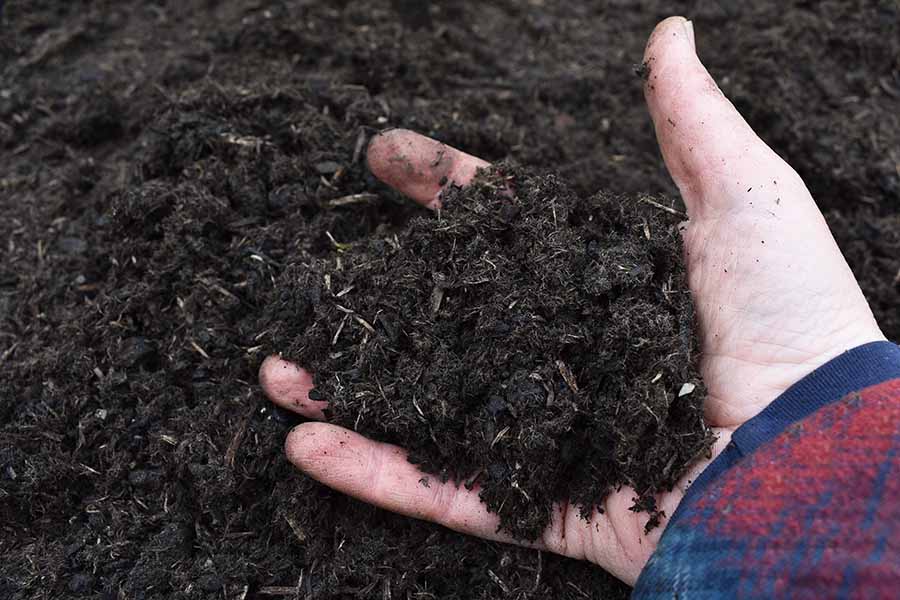Biochar's extensive list of applications is perhaps of most significance in the agricultural sector. Numerous research studies have confirmed its efficiency and ability to improve soil health and plant productivity globally and under varying environmental conditions.
Soil microbiome

Biochar is often dubbed a 'microbe hotel', its large surface area and porosity functioning as many differently sized rooms that accommodate a diverse range of guests - or microbial communities. Its high porosity means that water and nutrients are easily absorbed and readily available to microbes while other physical characteristics create a sanctuary against environmental stresses and predators (Palansooriya et al. 2019). Ultimately, the expansive space, protection and nutrients provided by biochar is comparable to the luxuries of a five-star hotel, attracting a large diversity of microbial communities. But, keep in mind that biochar must first be 'inoculated' or 'activated' to successfully house microbes for soil and plant fertility.
Adding raw biochar directly to soil can be troublesome as biochar acts as a 'sponge', absorbing as much water and nutrients as possible. This introductory phase (which could take anywhere from three to six months) leaves plants with a limited supply of water and nutrients (Callaghan 2020). Farmers, therefore, recommend 'charging' biochar before adding it to soil. The method of activating biochar involves soaking it in fertiliser, compost, soil or green waste before being applied. The SoilFixer has provided a step-by-step process and necessary tools for the job. And you can even simplify the process by buying already-activated biochar.
Nutrient retention
This implies that beneficial compounds remain in the soil until they are required by plants rather than leaching into groundwater or being released in runoff. Healthy soils are loaded with macro and micronutrients, which are essential for plant growth and high crop yields. Because of its high surface area and porosity, biochar can absorb and store these nutrients in the soil. Ayaz et al. (2021) created a comprehensive list of studies examining the ability of biochar to make crucial nutrients bioavailable (able to be absorbed by plants). In each of the studies, different forms of biochar materials were used, including lantana camara, poultry manure and wood chips. Each experiment showed elevated macro and micronutrients within the studied soil types.
Because of their high surface area and porosity, biochar can absorb and store nutrients in soil
Your choice of biochar and the rate and method of applying it to your soil will highly influence its effect on crop growth. Various biochars will be more compatible with different soil types and crops depending on the surrounding environmental factors. Experimenting with different types of biochar on test patches will determine which solution is best for your agricultural system.
Soil pH
Acidity in soil decreases the availability of vital plant nutrients like phosphorus, while raising toxic levels of elements such as aluminium and manganese. It can also result in essential nutrients being leached below the root zone. When applied as an amendment, biochar can improve the pH of acidic soils (Bayu et al. 2016).
- Liming: liming is a common agricultural practice that involves adding specific materials to soil that will increase the soil pH (making it more alkaline). Biochar can be used as a liming material, reducing toxic elements and increasing the bioavailability of important nutrients (Chintala et al. 2013).
- Cation exchange capacity (CEC): this refers to the soil's capacity to retain and exchange positively charged ions (cations). Healthy soils consist of many materials including organic matter, which typically carries a negative charge. Yet, important plant nutrients such as magnesium, potassium and ammonium are positively charged. Biochar is made of organic matter and naturally attracts positively charged ions including important nutrients for plants to absorb. Retaining these nutrients reduces the concentration of hydrogen ions in the soil (responsible for acidity), which indirectly lowers soil acidity (Chintala et al. 2013).
- Microorganisms: soil acidity can also be improved as a positive result of other processes. Biochar attracts microorganisms and thereby regulates organic decomposition and the release of organic acids.
Once you have incorporated biochar into your soil, monitor changes in soil pH and adjust the proportion of biochar where you think necessary. Conducting frequent soil tests will help you achieve the best results.
Immobilising toxic metals
Biochar can reduce the amount of toxic chemicals dispersing through soil and water. Heavy metals (including cadmium, lead and arsenic) accumulate in soils for several reasons, including the use of synthetic fertilisers, manure run-off and industrial emissions (Rai et al. 2019). Toxic metal absorption in plants slowly accumulates in the food chain, posing a risk to human health. Thankfully, biochar can reduce or even inhibit metals from becoming bioavailable in soils. Improving cation exchange capacity, nutrient retention and microorganism abundance reduces the bioavailability of heavy metals and the risk of these metals accumulating in the food chain (Rai et al. 2019).
Drought and salinity stress
Drought stress for plants can create Reactive Oxygen Species (ROS) (physiological byproducts of cells), which can be fatal for plants. Because of its porous nature, water is absorbed more efficiently in biochar-rich soil. This means more water availability, which relieves drought stress for plants (Mansoor et al. 2021). Biochar also enhances gaseous exchange and electron transferring mechanisms, which can stop ROS from fatally damaging plant growth (Mansoor et al. 2021).



